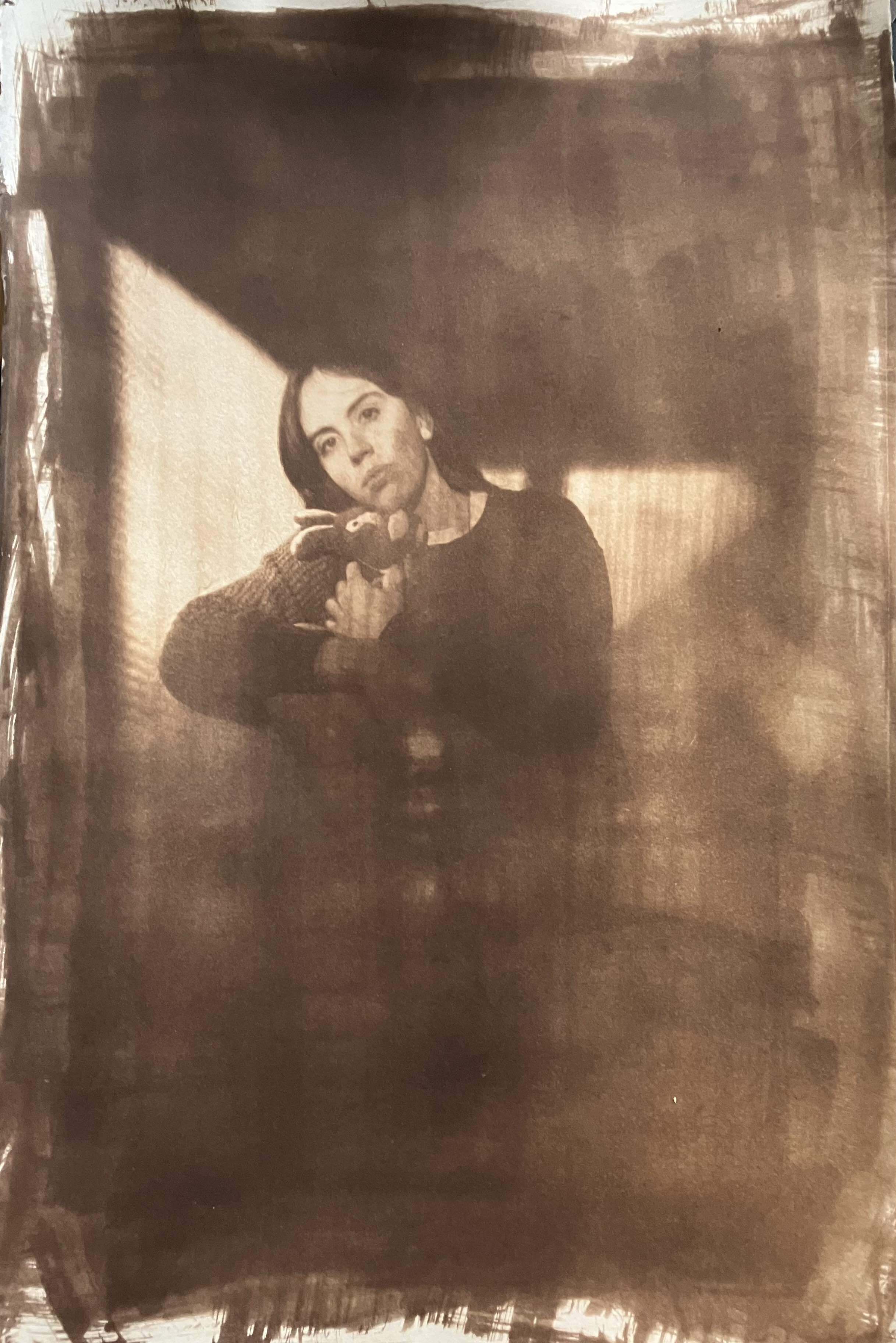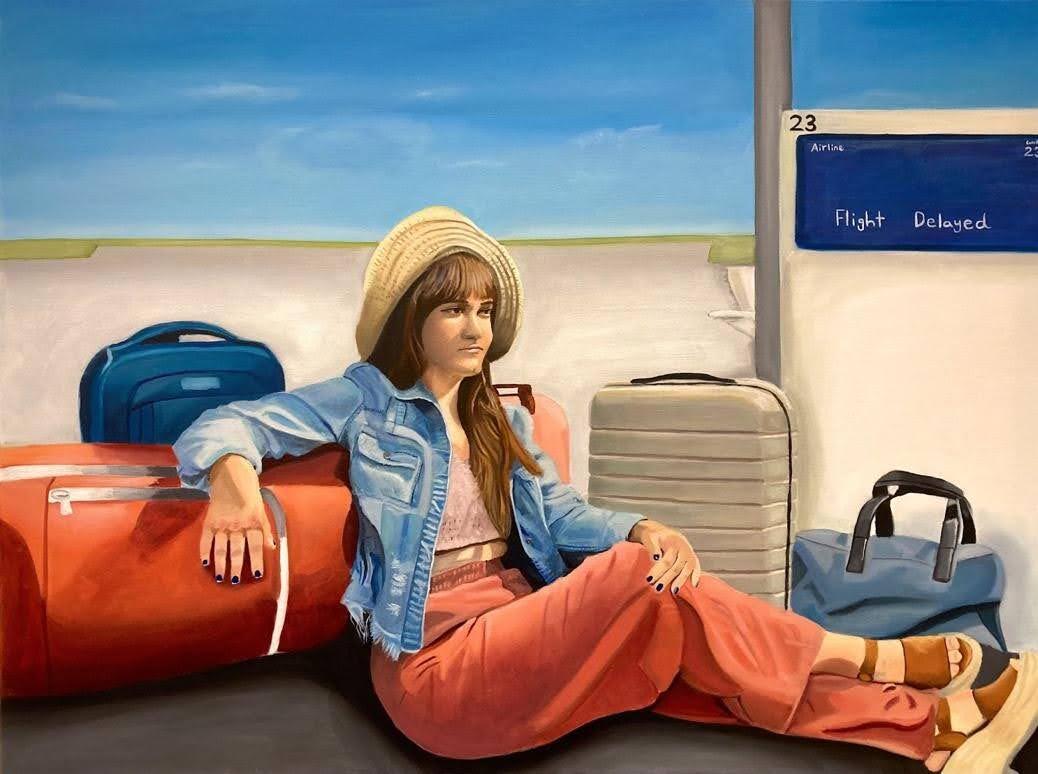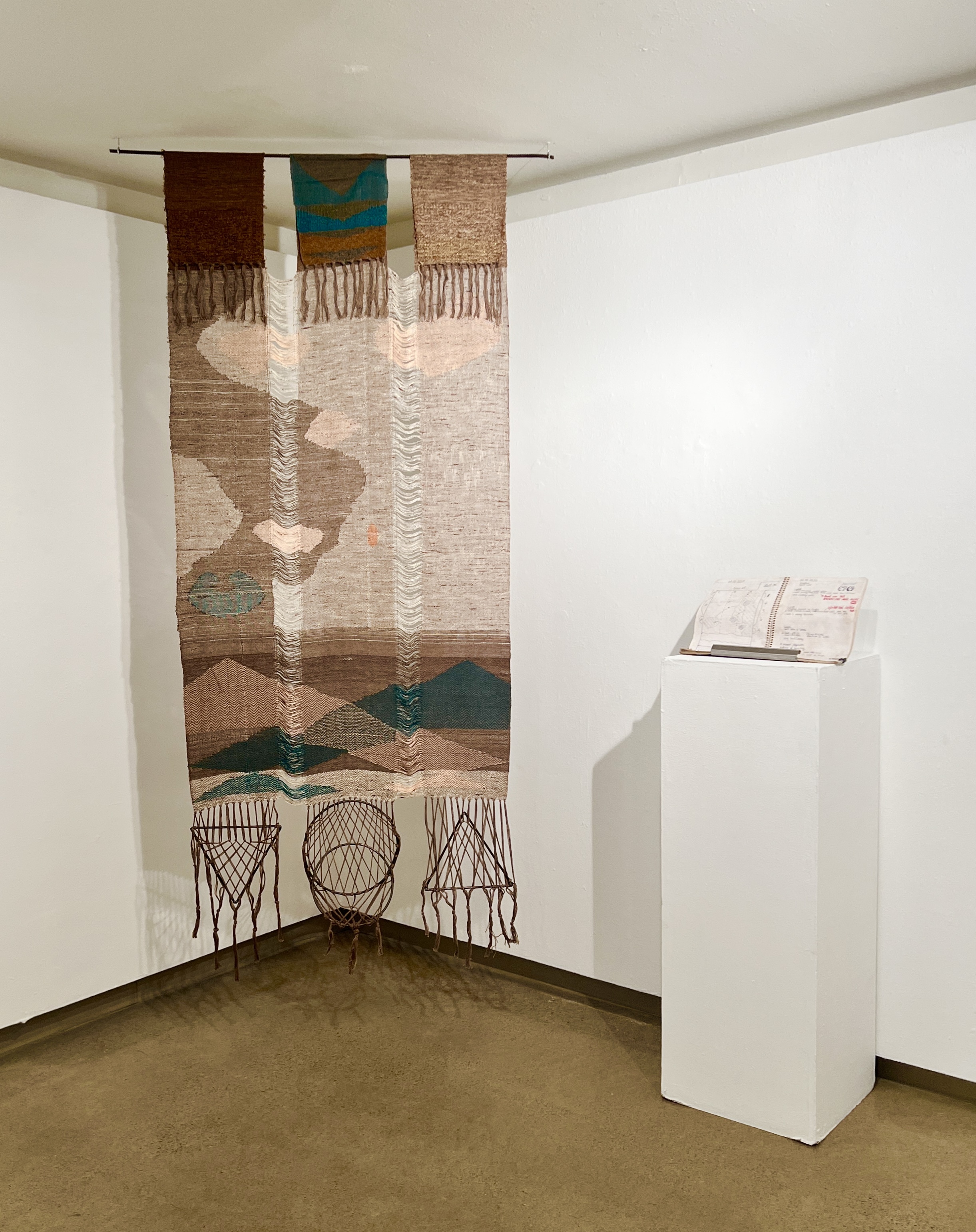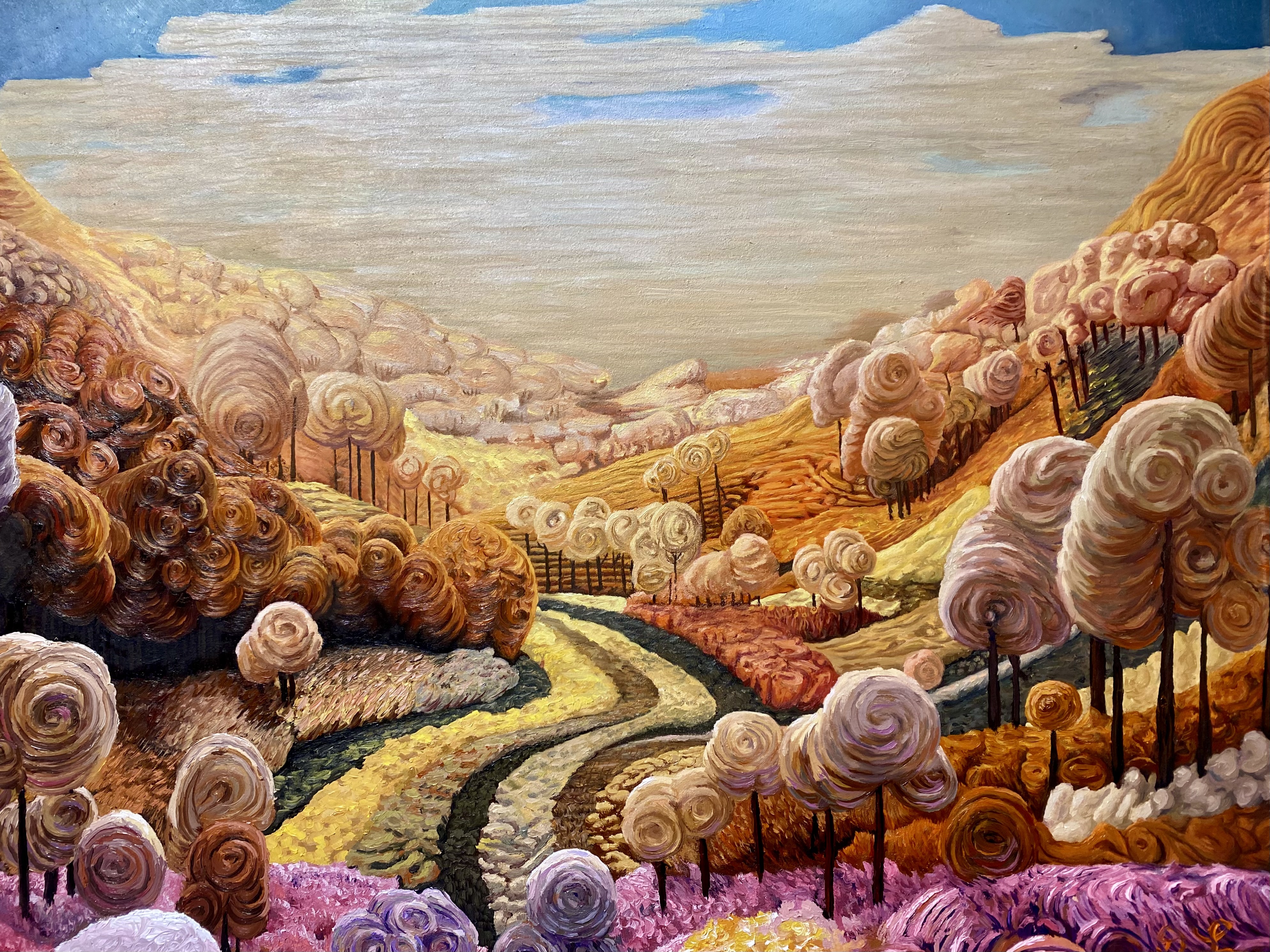The 2023 Winter BFA Juried Show is currently underway at the Harry Wood Gallery of the Herberger Institute for Design and the Arts, running from Dec. 11 to Jan. 11, 2024. This year’s gallery, juried by Professor Ryan Takaba, represents more than 20 students pursuing bachelor’s degrees in fine arts from ASU’s School of Art. Their work features sculptures, self-portraits, textiles, printmaking, photography and more.
The gallery is currently open from 9 a.m. to 3 p.m. and will be closed on both Christmas Day and New Year’s Day. There is no cost of entry, and students are encouraged to come to support the artist community at ASU.
According to Hanley Ange, the ASU School of Art’s gallery specialist, this exhibition sought to illustrate a wide range of student talent.
“Our juror, Ryan Takaba, wanted to ensure we showcased great work from all areas of study and a wide range of work from artists who are technically skilled as well as those who are more conceptually driven,” Ange said. “Out of about 250 artwork submissions, this resulted in 24 artists on display from each of the concentrations offered in our BFA program.”
This show allows students pursuing a Bachelor of Fine Arts to familiarize themselves with the world of galleries and applications while making the process both free and highly accessible.
“It’s really great to see what’s happening in the department as a whole,” Takaba said, the show’s juror and a clinical assistant professor at the ASU School of Art. “To get a comprehensive view of what’s happening and then to see how people’s more personal ideas are getting expressed through class projects. You can start to see more of a personal growth there, and these shows are a good way to see that.”
Not only is the exhibition available until Jan. 11, but ASU students should also look forward to the closing reception on Jan. 9, from 5:30-7:30 p.m. For more information about the gallery overall, refer to this link.
Get to know more about some of the featured artists below, as they share their experience as BFA students at ASU, their creative process and selected projects.
Synnova Blattman, a fourth-year student studying photography:
In her submission, Blattman wanted to focus on both nostalgia and her background as an artist. Her featured work is a self-portrait, done in the traditional photographic process, using pre-film and pre-digital methods. Blattman, in the photograph, stares back into the lens, clutching a stuffed rabbit from her childhood.
Originally, the piece was no more than a digital photograph, but in her mind, it was not yet perfect. Blattman thought the composition was compelling, so she turned it into something new, rather than scrapping the project.

Question: Tell me a bit about yourself and your background.
Answer: I am 22 years old, originally from South Carolina, but I’ve lived abroad for about 10 years. I came to ASU in 2019. I am also minoring in sustainability, so I have a passion for the outdoors and photographing the outdoors. I’ve taken a whole bunch of classes here at ASU, and it’s a great place to be.
Q: What has your experience been like as a BFA student at ASU?
A: Being a BFA student at ASU really lets you take on a huge variety of classes. Not only do I take my photography classes, but I have to stretch myself into other mediums. I’ve taken printmaking classes, illustration classes, and, most recently, a neon class, which was super cool. I was able to stretch myself in whole different ways and found a ton of different mediums I now love and enjoy.
Q: Tell me a bit about the specific piece you have featured in the exhibition.
A: It’s kind of a reflection of this rabbit I’ve had since I was born. It’s been the only stuffed animal I carried with me throughout my entire life. It’s come with me living abroad, it’s come with me to college. I feature rabbits a lot in my work, so I wanted to do something with that.
Q: Why do you think other ASU students should come and observe the exhibition?
A: I think it’s really important to support the arts, especially since there is a whole gallery right on campus. If you’re in between classes, you can just come and see what’s happening. Art really tells what’s taking place in society and culture at a specific moment in time. We’ve all worked so hard on our pieces for this semester, and it’s satisfying when people come and appreciate that, and then they can learn too, from what they’ve seen in our work.
Everett Milloy, Fall 2023 graduate with a bachelor’s degree in fine arts with a photography concentration:
Despite his recent attempts to break away from rodeo photography, Milloy leaned into his passion for it in his senior portfolio this semester. The submission he currently has featured at the 2023 Winter BFA Juried Show is titled “Tighter,” showing the intricate details of a bull rope up close.
This piece is one of the last Milloy made in his time at ASU, as he graduated this winter with his Bachelor of Fine Arts, with a concentration in photography. He hopes to one day expand his skills in fashion photography.

Question: Tell me about yourself and your artistic background.
Answer: I’m not originally from Arizona, but I grew up here and I call it home. I didn’t find my love for Arizona until very recently, and I grew into its natural beauty. That’s what made me want to photograph Western. I think the photo department changed a lot, and I grew with it throughout these years. Coming into ASU, it was very dark-room heavy and materialistic-based major, and then it slowly moved to more digital aspects and became more conceptual.
Q: What pieces do you find yourself normally making?
A: Just for this past series, I was focusing on rodeo culture and bull riding. I am hoping to explore outside of that. I put myself into a box, and people looked at me as this cowboy photographer, but really my love is in fashion and fashion photography. But I started shooting rodeo for the fashion, for the ornate display of costumes and them being showmen in the arena.
Q: How would you describe the piece featured in this show?
A: The piece is titled “Tighter.” It is sort of a close portrait of a bull rope. It was exploring the objects of bull riding, so I placed it on a canvas backdrop. I do really like the image. It was the first image in my senior exhibition. It was the first image you saw on the right hand of the show. It gives context to the viewer about what my exhibition was about.
Q: Why should other ASU students come to this gallery in particular?
A: Mostly for the range it is displaying, across all the different art majors. You have sculpture, you have painting, you have photos, printmaking, everything. It’s a show for everyone. Whatever you are interested in is there.
Natalie Hoder, a fourth-year student studying art (painting and drawing):
Hoder most often finds herself painting people, landscapes and objects to help effectively illustrate the untold stories she finds in between the lines.
Her piece “Delayed” pictures a young girl surrounded by luggage in an airport and is part of her study with Professor Melissa Button. The painting is larger than most projects Hoder has pursued, but she claims it has given her “the confidence to feel comfortable creating art in any size.”
Look out for more work from Hoder as she prepares for her senior exhibition in spring 2024.

Question: Tell me about yourself and your background.
Answer: I was born and raised in Washington State and while Washington can be creative in its own way I believe the schooling and education for art is not up to par. So I came to ASU because I believe that the Herberger Institute has one of the best art programs and so I wanted to learn everything I could in AZ.
Q: What has your experience been like as a BFA student?
A: Each year here has pushed me and challenged me in many aspects of my creative process. Coming into my education, I knew only basic skills you learn in K-12 art, but when I got to ASU, I got to experiment with different mediums. This semester has taught me to think more critically about why I make art and what I hope to see, as well as what I want others to see, in my artwork.
Q: Tell me more about the specific piece you have featured in this show.
A: For this piece, I did an underpainting process, which is painting the piece in acrylic and glazing oil paint on top of it. As a student, this piece showcases the progress I have made in my education here at ASU. As an artist, it inspires me to push myself to make each piece better than the last. It gives me a sense of accomplishment that helps fuel my drive for art.
Q: Why should other ASU students come and observe the art being featured?
A: Everything that makes people different from one another, that gives us our own unique interests and self-expression, all comes from art. Everyone should go and see art, but in particular, go see this one. Experience diversity, cultural enlightenment and creative thinking by some of our fellow students here at ASU. Sometimes we’re all sectored off into our colleges and stay in our own bubbles, but we should go out and see what other students are doing.
Sarah Marie “Gigi” Brazeal, studying sculpture and art history:
Brazeal is, in her own words, a non-traditional BFA student. She is a first-generation student who returned to higher education after 20 years. During the COVID-19 pandemic, Brazeal lost her job as a tattoo artist, as the U.S. government ordered the shutdown of all non-essential businesses. During her return to ASU, she rediscovered her love for ancient cultures, art history and archaeology.
Currently, Brazeal makes “hanging works that incorporate welded steel with fine textile work,” as well as archaeological projects and drawings in charcoal, ink and graphite. Her displayed piece at the Harry Wood Gallery is a 7.5’ weaving based on her archaeological background.

Question: Tell me about yourself and your background.
Answer: I figured I’d do a quick two years to finish up my BFA and move on but being back in higher ed revitalized my love for ancient cultures, art history and archaeology. I added a bachelor’s in art history and an anthropology minor, and I began working in an anthropology lab here at ASU as well as an archaeological site in Turkey. I am about to finish my degree and have applied for a master’s program, studying art history.
Q: What has your experience as a BFA student been like?
A: My experience has been interesting because I am constantly in class with people who are much younger than me. It has also been fun because I often get to do a little teaching of my own, as I’ve been an artist and armchair historian for longer than some of my classmates have been alive.
Q: Tell me about the specific piece you have featured at the Harry Wood Gallery.
A: Every day on-site in Turkey, I draw the room I work in because that is how I keep track of my work best. I have long been trying to find a way to incorporate my field notes into my artistic work and hadn’t quite figured that out until I started weaving. The current piece appears next to my field notebook, so people can see the image I based the textile on.
Q: Do you have anything else to add?
A: One thing I think is important for all students interested in art to understand is that art is a skill, not a talent. Anyone can learn to make art and get good at it. One shouldn’t be discouraged if their art isn’t great at the beginning or if they don’t get accepted to a show. I would also encourage student artists to look into ways that they can use their art beyond the gallery setting. There is a shortage of artists working in science communication in this country, and it’s a great field to get into.
Dylan Seeman, a third-year student studying animation:
Dylan Seeman first developed his love for visual arts after joining the Navy and spending seven years traveling the world. Before that, Seeman worked any odd jobs he could, including working as a rock-climbing instructor, delivery boy, car washer and more.
As a BFA student, Seeman works in animation with a concentration on what he describes as complexity. His featured piece, “A Dream Today in November,” focuses on the ideals of today and problems of disillusionment.

Question: Tell me about yourself and your background.
Answer: I was born in Flagstaff in 1995, and I moved to the valley when I was five years old. When I was finishing my contract with the Navy, I discovered a deep love for visual arts and came to ASU. My concentration is animation, but that is only a small portion of my work.
Q: What was your motivation for applying to this gallery show?
A: Art isn’t an isolated act. We make things not for ourselves, but to improve, confront or engage with our world. Putting visual artwork out is about wanting to have a conversation where language often is inadequate. That is my motivation.
Q: Tell me more about the specific piece you have featured.
A: I am trying subtly to use the historical connotations of November, as most revolution takes place then, and often the disillusionment of utopia that spurs on that revolution. And by not saying my dream or taking possession tense in the title, [I am] suggesting that this might be someone else’s dream. I would like every person who views it to be a critic.
Q: Why should other ASU students come to observe this exhibition?
A: Most people don’t live, eat and breathe art. That’s why going to the Phoenix Art Museum as a viewer and trying to engage with that art would be like trying to work out with Olympic-level weightlifters. But coming down to these local school shows and engaging with people you can see as your peers, that is how you build up your art muscles and improve.